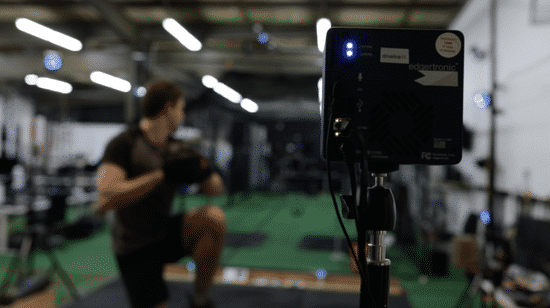Caught Looking: Lateral Elbow, Energy Flow, Baseball and Investing

Here are three studies the R&D Department read this month:
Does Youth Baseball Result in Morphologic Changes of the Lateral Elbow? A Prospective MRI Study
Overhead throwing for youth athletes is a tender subject due to its assumed role in many arm injuries. At Driveline, we also talk about how managing throwing volume using Motus— among other tools—is important for improving the health and performance of our athletes. Harkin et al. at the University of California San Diego did a prospective MRI study with the lateral elbow to see if there were structural changes in young baseball players’ bones.
A prospective study is a longitudinal design where you collect information before an injury happens or another measurement is made. In this case, MRIs were collected before youth baseball athletes participated in a few more years of baseball, after which another MRI was taken to compare the structure of the athletes’ elbows. Specifically, the authors were interested in whether or not the young baseball players developed an overgrowth in their radial heads on the lateral (outside) part of their elbow.
In the group of 26 athletes, just over half of them still played baseball after three years. When looking at all of the athletes, none of them developed overgrowth in their dominant, throwing elbow. In fact, even when comparing those who were still playing at the 3 year mark after the first MRI measurement to those who were not, there was no overgrowth in the athletes who still played.
These results suggest that there are no morphological (structure) changes from youth athletes participating in baseball. Not overly groundbreaking, but it can serve as a baseline for this demographic of athletes, i.e. we don’t expect to see changes in athletes’ elbows so if there is a noticeable structural change in an athlete’s elbow as seen by a doctor and imaging techniques then maybe it should be taken seriously.
Effects of Hip Range of Motion and Isometric Strength on Energy Flow during Windmill Softball Pitching
The Auburn University Biomechanics laboratory does a lot of work with the Softball team. One of the latest papers from Dr. Oliver’s group looked at the passive range of motion and isometric strength of both hips and how it relates to energy flow out of the trunk, upper arm, and forearm segments.
Energy flow is becoming a more common outcome measure in baseball and softball biomechanics using joint force power and segment torque power. These measures incorporate the kinetics (forces, torques), movement velocities (linear, rotational velocities).
In a sample of 29 youth softball players, the authors found that the drive hip external rotation isometric strength was positively correlated with more energy flow out of the trunk segment and the upper arm segment. Additionally, the study showed that pitchers who had higher energy flow throughout the various segments in the biomechanical model (trunk, upper arm, forearm) achieved higher pitch velocity.
One thing to note with these results is that kinetics (forces and torques) as well as the subsequent energy flow metrics often trend positively with body weight. Body weight also typically correlates to velocity, especially within youth populations because it can describe physical development. This is something that could be confounding the results of this study.
However, the results highlight the importance of lower body strength in being able to transfer energy throughout the kinetic chain effectively. The softball windmill pitch is very different from the baseball pitch, but the kinetic chain and the idea of transferring energy from its creation at the ground is something they have in common. Just between you and me, we are installing force plates in the biomechanics lab mound over the next few weeks (Feb. 2020) which will allow us to do much more kinetic chain and energy/power analysis in the baseball pitch. Stay tuned.
Does the principle of investment diversification apply to the starting pitching staffs of major league baseball teams?
Paul J. Roebber at the University of Wisconsin–Milwaukee looked into a really fun and interesting idea about MLB starting pitching rotations. He took the idea of wanting to diversify investment portfolios for maximizing returns while managing investment risk and looked to see if that is a good approach for staffing a starting pitching rotation in the MLB.
Roebber created a model for playoff qualification probability and found a couple different things:
- Teams with above average resources performed better when they spent a lot on a couple of expensive starters as opposed to staffing a more evenly paid staff
- Relatively obvious, but pitcher performance must match the investment in the pitcher to achieve high qualification probability
- Luck is a factor, but teams who allocate more money to their pitching staff are more resilient to bad luck
Despite these takeaways landing on the more obvious side, this list of findings does a good job highlighting the risk-reward relationship. And to address the question in the title of this article, it does seem like starting pitching staffs of MLB teams do follow a similar principle. To increase your chances of qualifying for the playoffs, you may want to bet big with signing a high paying contract. Additionally, it has to pan out. But that is the risk, paying a big-name pitcher and hoping for the investment to be returned. Similar to how if you take a really big bet as an investment outside of baseball, the reward could be high or you could end up losing.
As always, I should also note how there are a great deal of things that also affect a team’s chances of making the playoffs. More than anything this is a very creatively framed research question and can be a fun read for the mathematically and statistically minded reader!
Comment section